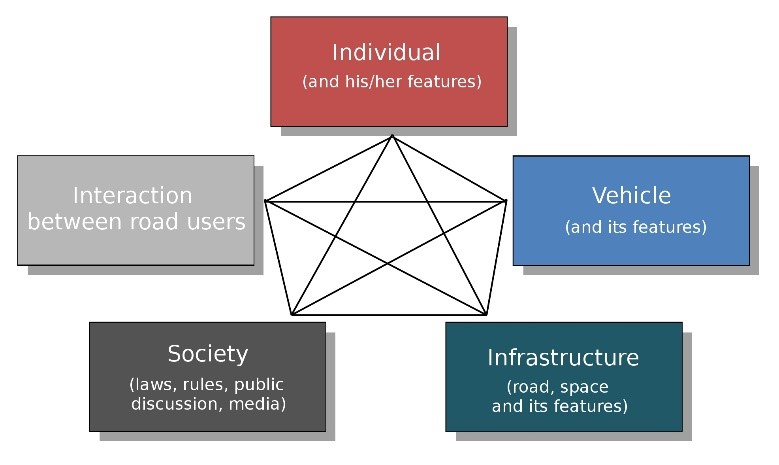Behavior of Road Users and Sustainable Traffic Modes
A special issue of Sustainability (ISSN 2071-1050).
Deadline for manuscript submissions: closed (18 June 2021) | Viewed by 5719
Special Issue Editors
Interests: transport; traffic psychology and sociology
Special Issues, Collections and Topics in MDPI journals
Interests: traffic; psychology; mobility
Special Issues, Collections and Topics in MDPI journals
Special Issue Information
Dear Colleagues,
How does a society want to appear with respect to sustainable transport and related behavior? This is not an easy question to answer. The same is true for the question about the wishes and desires of certain actors. Persons and groups with a profound attachment to walking would wish for a society which is developing in this regard. However, the assumption is that society has not yet come to this point. The question is therefore: where are we standing now, and what is our position? An analysis is necessary. It is not possible to define our actual standing concerning the behavior of road users that is required in order to achieve a sustainable transport system. However, there are models that are helpful when we systematically try to identify shortcomings and deficits in today’s transport system. Each of us has experienced specific deficits in practice that prevent the traffic system from becoming sustainable, not least within one’s own personality and attitudes. However, a consistent and comprehensive overview is necessary in order to identify different problem areas. Preferably, we should start with collecting data to establish the current status of sustainability in our transport system—how can we describe the traffic and transport system in terms of sustainability? In the next step, we can focus on the existing problems: what exactly are the deficiencies, in what areas, and what causes them? Only after having completed these steps should efforts be made to develop solutions. The diamond (Figure 1) can be used as a theoretical model for the discussed steps: as an integrated warning device, as an aid in order to detect problems, and as a framework when it comes to finding solutions.

Figure 1: The diamond (Risser, 2000)
Individual level: Over time, individuals develop attitudes, values, considerations, motives, and specific points of view which have been and will be influenced by the various levels of the diamond; they can be modified in the process.
Interaction between road users and their experience: The individual behavior in the public space depends on the actual communication history made within specific forms of traffic participation. What was this individual experience? Are there feelings of being second-class, etc.?
Infrastructure: What kind of support does infrastructure offer when using different transport modes? How easy and comfortable is the use of these modes? What are the behaviors and communication types that infrastructure supports?
Mode of transport: What advantages do different modes of transport offer, and what are the perceived disadvantages? Which burdens and frustrations does the use of a certain transport mode entail? What needs can be satisfied—or not—with a certain mode of transport?
Society: “Society” comprises media and the related public discourse—family, friends, social environment, peer groups. How is the role of different forms of traffic participation viewed and discussed in all these areas? All this is mirrored in laws and regulations and in informal norms.
Papers that deal with one or more of these aspects will be welcomed and sent through a regular review process. By following the principle that “transport = behavior”, submitted papers should have the potential to usefully supplement, or relate to, existing literature.
Prof. Dr. Ralf Risser
Dr. Matúš Šucha
Guest Editors
Manuscript Submission Information
Manuscripts should be submitted online at www.mdpi.com by registering and logging in to this website. Once you are registered, click here to go to the submission form. Manuscripts can be submitted until the deadline. All submissions that pass pre-check are peer-reviewed. Accepted papers will be published continuously in the journal (as soon as accepted) and will be listed together on the special issue website. Research articles, review articles as well as short communications are invited. For planned papers, a title and short abstract (about 100 words) can be sent to the Editorial Office for announcement on this website.
Submitted manuscripts should not have been published previously, nor be under consideration for publication elsewhere (except conference proceedings papers). All manuscripts are thoroughly refereed through a single-blind peer-review process. A guide for authors and other relevant information for submission of manuscripts is available on the Instructions for Authors page. Sustainability is an international peer-reviewed open access semimonthly journal published by MDPI.
Please visit the Instructions for Authors page before submitting a manuscript. The Article Processing Charge (APC) for publication in this open access journal is 2400 CHF (Swiss Francs). Submitted papers should be well formatted and use good English. Authors may use MDPI's English editing service prior to publication or during author revisions.
Keywords
- sustainable traffic
- mode choice
- active traffic modes
- walking
- cycling
- road users
- behavior






